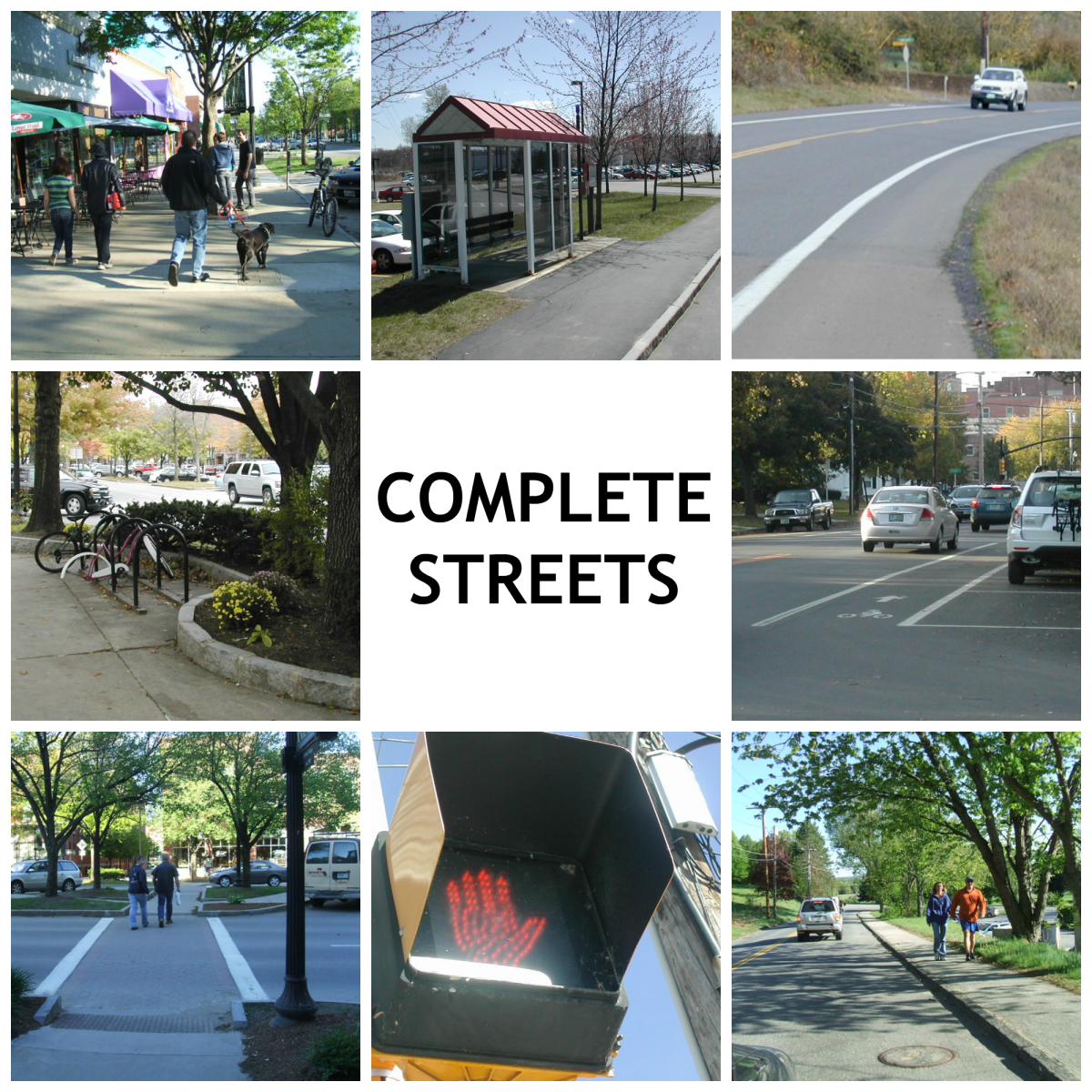What are Complete Streets?
Complete streets are pedestrian, transit, and bicycle – friendly streets that provide safe and easy access for users of all ages and abilities, regardless of their mode of transportation. It is an approach to planning, design, construction, and maintenance of the roadway network that considers the context and travel patterns in order to meet the needs of everyone.
What do Complete Streets Look Like?
Complete streets will look different depending on the context (i.e. surrounding land use) and the function of the road. For example, a rural arterial road will look different from an urban arterial road. In the former case, a larger shoulder that provides room for pedestrians and bicyclists may be sufficient, whereas the urban case would likely require more considerations.
Some common elements of complete streets include sidewalks, bike lanes, wide paved shoulders, median islands, curb extensions, and roundabouts. Often streets will have narrower travel lanes, frequent and safe crossing opportunities, pedestrian signals, and accessible transit stops.
Benefits of Complete Streets
Complete streets are a great way for a community to enhance safety, boost the local economy, create a sense of place, and encourage healthier lifestyles. By encouraging mode switching for shorter trips, complete streets also help ease traffic congestion on main roads. According to the National Complete Streets Coalition, the many benefits of complete streets include:
- Improved Safety
- Better Health
- Stronger Local Economy
- More Livable Communities
- Increase in Mode Choice
- Decrease in Traffic Congestion
- Greater Sense of Place
- Lower Emissions and Cleaner Air
For more information about the benefits of complete streets, visit the National Complete Streets Coalition or download the The Economic Benefits of Complete Streets handout.
Click on the links below to learn about how to create a Complete Street network in your community:
